Yesterday, Sony had invited the press to come see its new products for 2016. Here, we had a chance to spend some quality time and get a closer look at new XD85, XD93, and XD94 models with 4K, HDR and Android TV. We also listened to Sony’s new wireless sound solutions.
Sony in 2016
Sony unveiled its 2016 TVs last month at CES but only a few of the TVs were on display. So we were excited to get a chance to examine them more closely and talk to Sony about subjects such as HDR, UHD Blu-ray and the UHD Alliance’s premium specifications that Sony has chosen not to back.

To start off the presentation, Sony briefly touched on the subject of Google’s Android TV operating system that was introduced in Sony’s 2015 TVs, and will be featured on 2016 TVs, too. Sony did not go into too much depth, likely because it had its share of software issues in 2015 – some which have yet to be fixed – and likely because Sony is not the only manufacturer to use Android TV. Philips is also using it and the two companies will be joined by a group of other TV manufacturers in 2016. Throughout most of the presentation, Sony instead focused on an area in which the company believe it excels; picture and sound quality.
However, Sony did talk about the fact that it can “side-load” exclusive apps onto Android TV and about its so-called ”Content bar”, which is a slide-up bottom menu with some clever features, including top picks for channels, favorite apps, and customizable shortcuts to for example input ports (Blu-ray player, set-top box or whatever). If you have a set-top box or any other player connected through HDMI you often have to rely on two remotes. Well, not anymore. In its 2016 TVs Sony has integrated support for an IR blaster that lets you control the Blu-ray player or set-top box with the TV remote.
An IR blaster is not a new thing and the technical implementation is pretty straight-forward, but no single manufacturer has cracked the nut yet. Sony could not confirm exactly which models will come bundled with the IR Blaster unit in the box, but assured us that XD85, XD93, and XD94 will have it. The bad news is that the TVs will need a software update to enable it, and that update will probably not be ready until summer 2016.
It was not possible to get private time with the new Android TV user interface and menus so we had no chance to check the version number and confirm that the new TVs will come with Android TV 6.0 out of the box, but the menus looked snappy and we did not spot any bugs during the presentation.
Android TV has been a success for Sony
Android TV has had its fair share of bugs and flaws, but for Sony the decision to switch to Android TV has been a great move, the company argued.
In several markets, Sony has increased its turnover, and last year customers bought higher-priced TVs and bigger screen sizes, compared to some of its competitors.
Sony failed to explain why that is but its decision to feature Android TV mostly on 4K TVs likely played a role. Another reason could be an increasing 4K TV market share as Sony has pushed hard for 4K and been one of the forerunners in the market. Sony also said that it sees strong sales of 4K TVs, especially in the Nordic markets.
Only one TV remote in 2016
It felt nice to touch and the remote sits comfortably in the hand, but it still feels very rectangular in shape. It feels like an upgrade from the previous years’ remotes. Sony also mentioned that the 2015 One-Flick remote cannot be used with the 2016 models, and it will not sell a new separate 2016 version of the One-Flick remote.
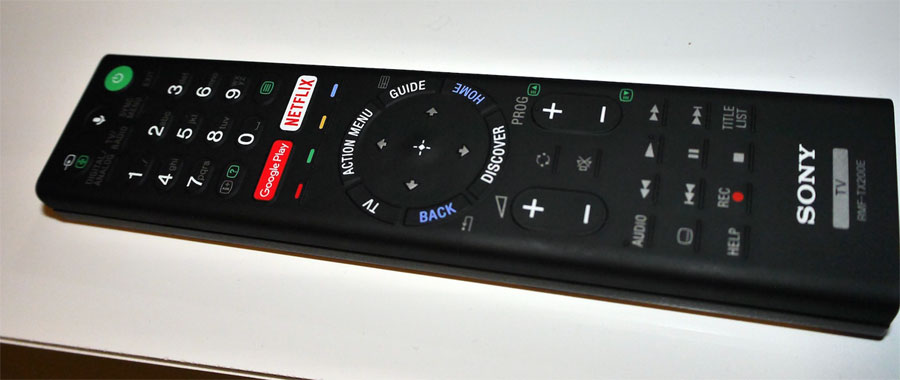
Sony XD85 - 4K “value-for-money”
Sony’s new XD85 is the successor to last year’s popular X85C model, and it looks mostly like a continuation.
XD85 measures 11.2 mm in depth on the upper part, which is twice the depth of last year’s super-thin X90C, which came in at 4.9 mm.
However, Sony has refined its wall bracket solution so that the XD85 and XD93/94 models will stick out only 37 mm from the wall, compared to 40mm on last year’s super-thin X90C model.

XD85 will be available in both black and silver metal finish. The chrome line in the center of the frame will be featured on both designs. The XD85 models will be available this Spring, hopefully by the end of March. The frame is a thin aluminium alloy that at first sight looks and feels like plastic. The back is made entirely of plastic.
This year, Sony has completely redesigned the stand. Over the last couple of years it has used two separated feet to support the TV, but in 2016 the TVs will be supported by a single center-aligned base with a brushed aluminium cover. This is not only for design as it serves a practical function, too. It is used as a cable management system. Simple, clever.
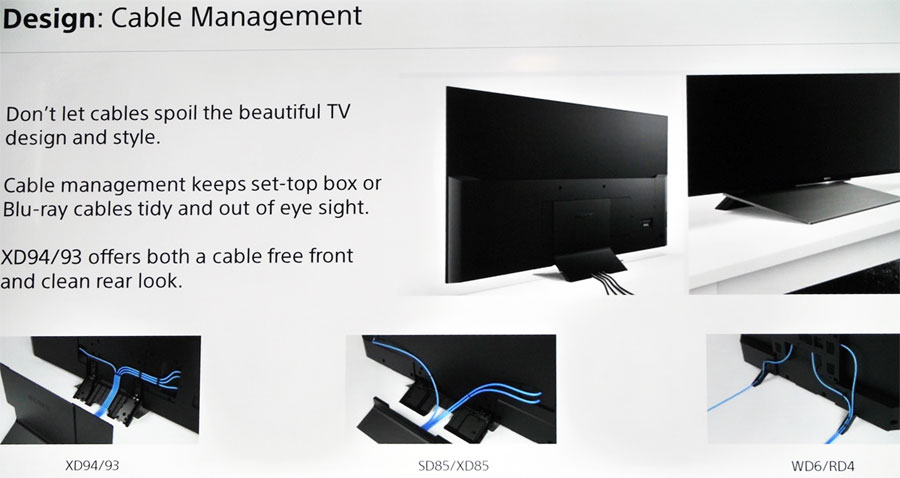
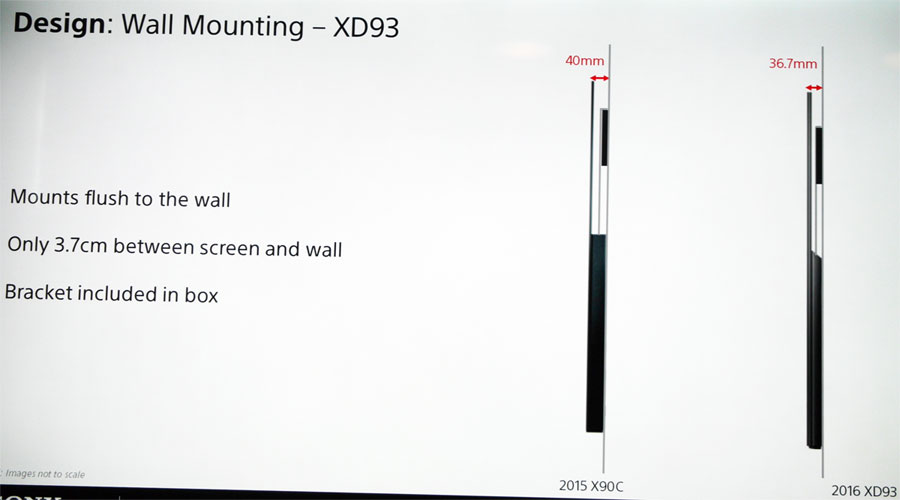
Sony had placed two XD85 TVs side-by-side to demonstrate 4K with and without HDR, and it was obvious that the larger color gamut and HDR in some ways improved the picture. It had better, more vibrant colors and was able to better boost highlights in the picture. Both XD85 samples were running in Cinema mode, which is often our own choice as a starting point for a calibration.
However, the demonstration also revealed some of the LCD technology’s weaknesses; details in the darkest areas of the picture were not as distinct as one could have hoped.
This was of course not a perfect set-up and the TVs had not been individually calibrated. We will have to wait and see how well XD85 performs once we receive one for thorough testing.

Sony XD94 - crčme de la crčme
Sony XD94 is the new flagship TV. Design-wise it will feature the same stand and cable management system as XD85. It will have a plastic cover to hide the easy-to-access ports (USB and HDMI) on the side of the frame.
The area behind the cover is big enough to house a USB stick. That might sound like a basic thing, but tech history has given us many examples of features that were not thought through, so you never know...
To indicate that the XD93 and XD94 are top-of-the-line TVs, these TVs will feature a “Champagne Gold” colored list on the frame instead of the chrome list on XD85. You decide whether that is tacky or not.

XD93 has significantly higher power consumption than the mid-range XD85 model. XD85 is estimated to consume around 165 kWh annually (under normal circumstances) in 65”, whereas XD93 takes that number to 232kWh annually.
The reason is the “X-tended Dynamic Range Pro” system and its HDR capabilities. These things do no come for free. It might not matter much to you but at least now you know.
Picture quality on XD93 was astonishing, and although we never saw a direct side-by-side comparison of XD93 and XD85, it was evident that the much higher peak brightness capabilities of XD93 visibly improved the picture experience.
In terms of price XD93 will probably cost 20-40% more than XD85, depending on the screen size and your region. Watch out for those bargains!
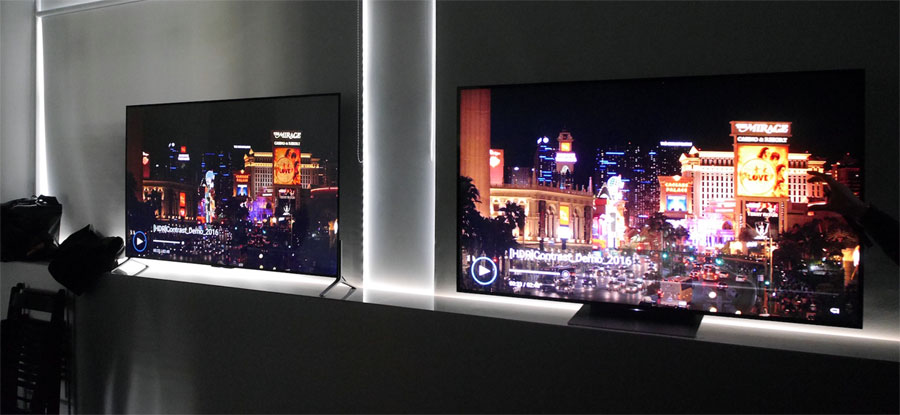
Sony confirmed to us that both XD93 and XD94 meet the criteria for “UHD Premium” in terms of color gamut, peak brightness and resolution. For colors this means at least 90% DCI-P3 coverage (and Rec.2020 processing) and peak brightness of over 1000 nits for HDR video.
However, Sony explains that it has chosen not the back the official “UHD Premium” logo. Instead the company wants to use its own “4K HDR” logo, which will be featured not only on TVs.
XD85 does not reach 1000 nits peak brightness and Sony refused to elaborate on just how high it can go. We will just have to wait to see.
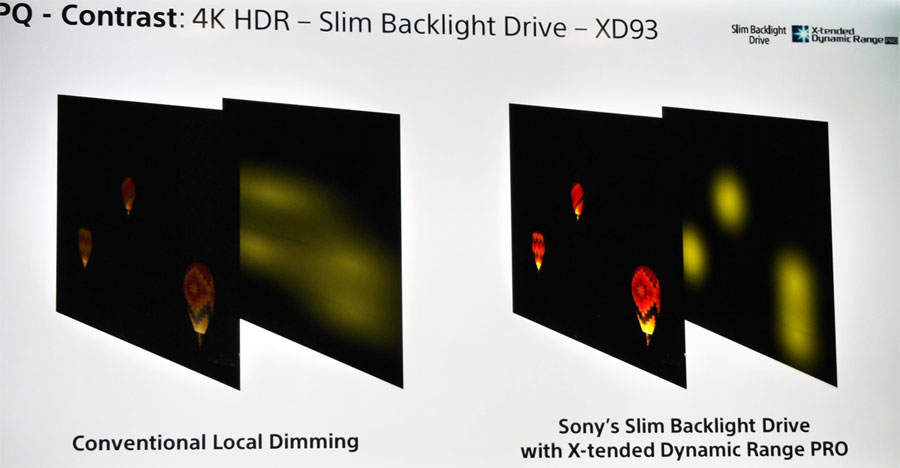
One of the reasons why XD93/94 is thicker than some of the other new TVs from Sony is due to a new twin layer structure construction that Sony has patented. Sony calls it “Slim Backlight Drive” and it claims that it can get accurate zone dimming control for HDR reproduction while at the same time slimming down the TVs.
Only the XD94 will have full-array local dimming.
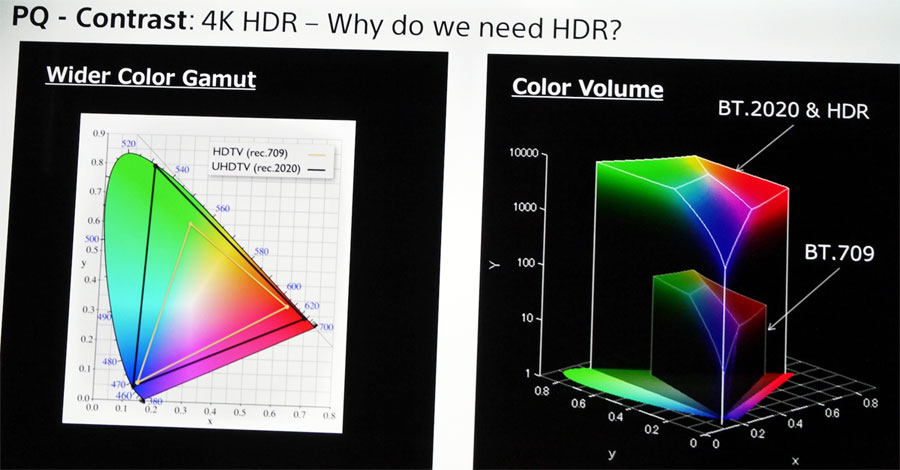
Sony’s X1 chip has been improved
The new 2016 TVs will feature some minor improvements over the 2015 models in terms of picture processing. The company claims that the X1 chip uses a refined algorithm that should improve 4K upscaling over the 2015 models.
They told us that one area, which has benefitted is HD-to-4K upscaling. If you so choose, the upscaler can tweak sharpness and other things. The new X1 chip can also "upscale" regular SDR (standard dynamic range) to "near HDR" (high dynamic range), Sony says.
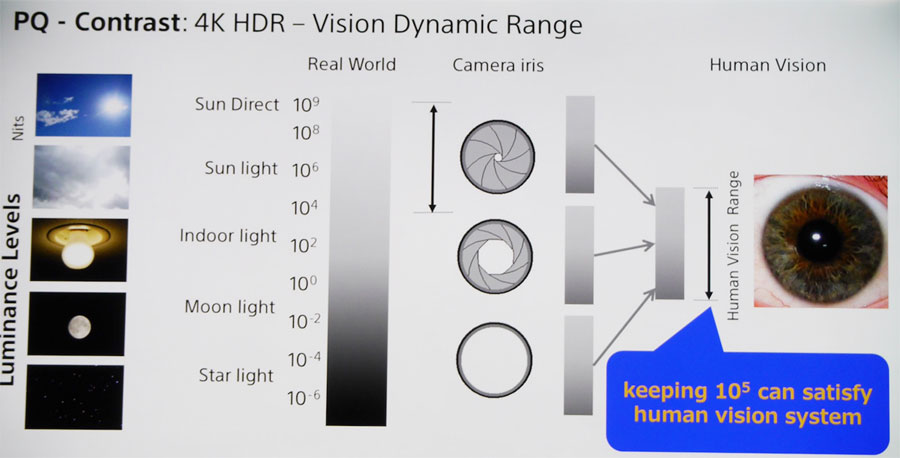
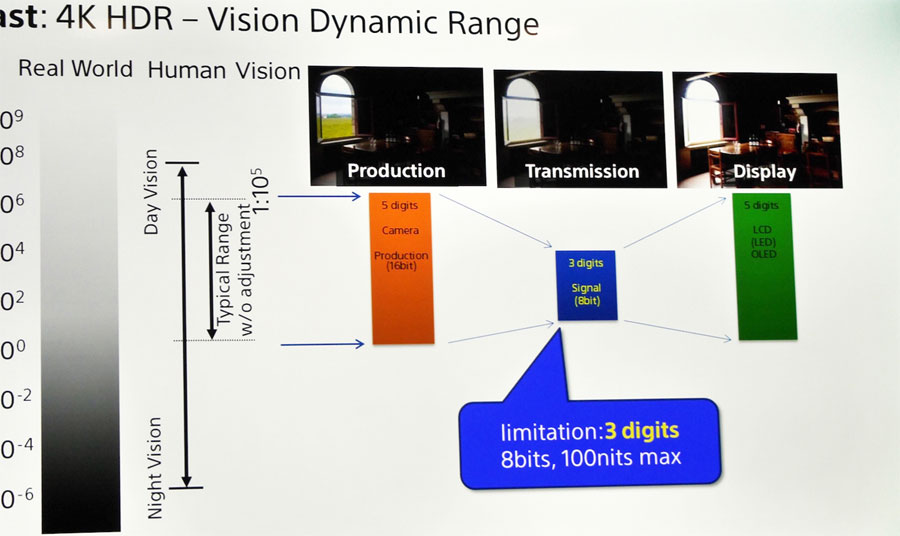
Sony stayed mostly mum on UHD Blu-ray
Sony repeated its vague statement that it plans to launch a UHD Blu-ray player in its fiscal year 2016.
Sony’s fiscal year starts in March 2016 and ends in late February 2017. Sony Pictures’ launch schedule for UHD Blu-ray movies will not be affected and they will start pushing out UHD Blu-ray discs soon, and by then Panasonic and Samsung will have launched their first UHD Blu-ray players. Oh the irony.
Sony once again confirmed to us that it will release Android TV 6.0 – Marshmallow – to its 2015 TVs, too. Some of the important updates, such as USB recording capabilities and picture-in-picture, will be released before the 6.0 update.
XD85 and XD93 will be launched in late March, whereas the more affordable WD7 and WD6 HD series will hit markets earlier in March.
Sony had nothing to add on PlayStation and 4K video playback.
Sony has not forgotten about wireless sound
Sony will launch several new soundbars in 2016. Some of them will be capable of transmitting sound wirelessly to other speakers.
Sony NT5 and CT790 are both 2.1 stereo soundbars with a separate, wireless subwoofer. Sony will also launch the wireless ZR5 and ZR7 speakers. These ZR models can connect wirelessly to NT5 and CT790 through a multi-room system and thereby act as rear speakers to create a 5.1 surround setup. Meanwhile, the soundbar will act as center, front left and front right.
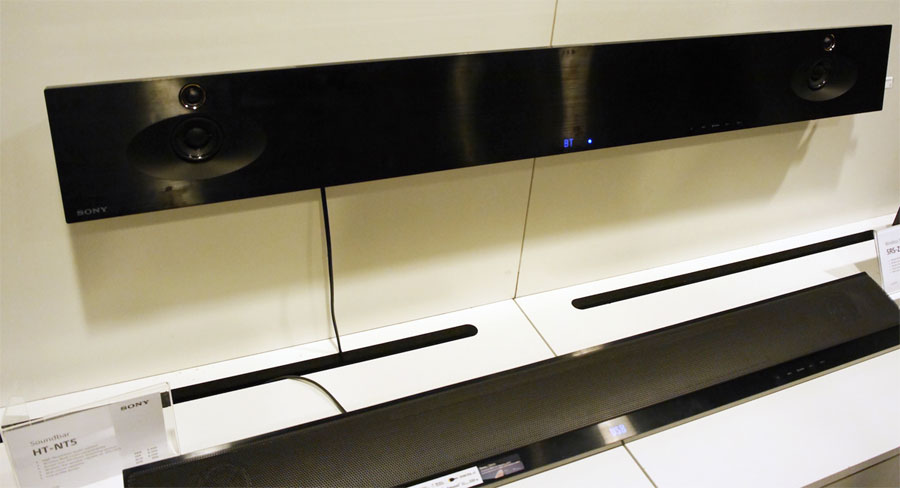
Sony expects the new soundbars to hit the market in May. NT5 will sell for 850 Euro and the more affordable CT790 will cost 530 Euro. Sony gave a quick demonstration where we saw a movie clip and listened to some music, and it sounded like the price tag will be justified. Of course, we will need more time to reach a conclusion.
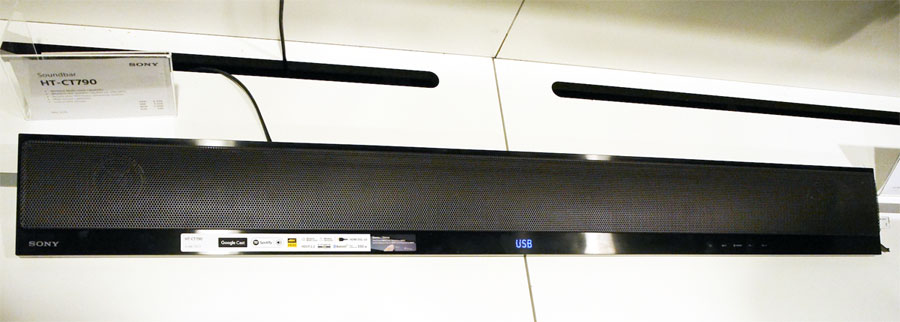
Sony will also launch two soundbars that can imitate 5.1 surround called RT3 and RT5. Like most of Sony’s audio products these will feature Bluetooth, NFC and support for multi-room.
However, the multi-room feature will not allow you to expand to 7.1 surround by adding ZR5 or ZR7 speakers. It is possible to connect the ZR models through multi-room link but the ZR’s will act as second-room speakers in for example the bedroom, kitchen or wherever.
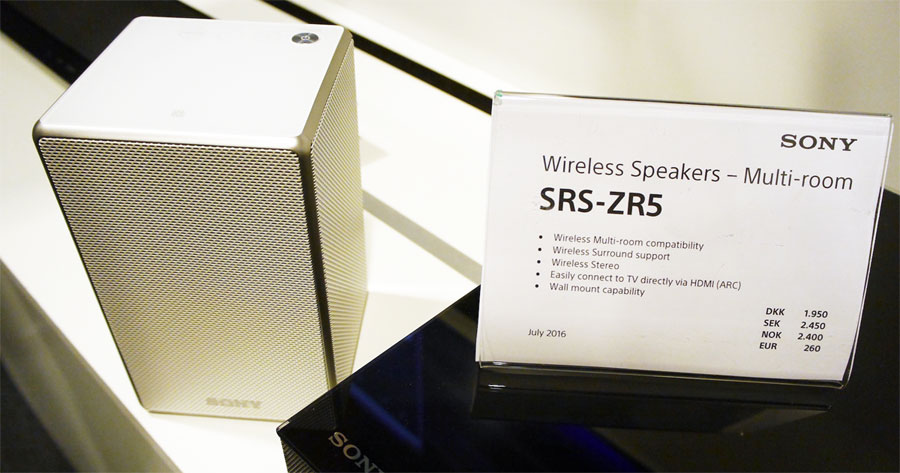
ZR5 has a HDMI port so you will be able to connect it via a cable to a TV. If you have two ZR5s you will get stereo and only one needs to be connected through HDMI – the other will be wireless. Unfortunately, it is not yet possible to connect more ZR speakers to create a 5.1 surround setup yet, and Sony could not comment on whether it will be possible at all.
Sony is also launching a more powerful ZR7, which of course has better sound. In addition, it features DTS, Dolby Digital and Hi-Res Audio plus a few more connections and a wall bracket solution. Again, Sony gave a quick demonstration of the speaker and from what we heard it sounded like pleasant, neutral sound.
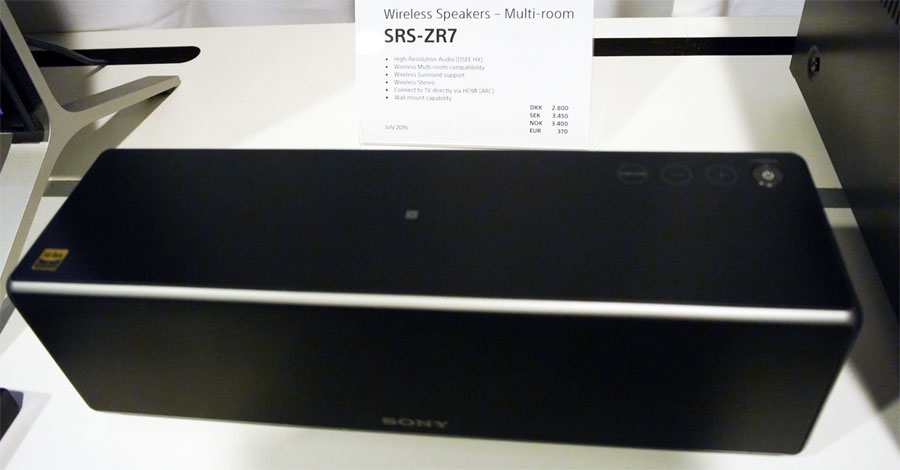
Last year, Sony launched its X99 and X88 multi-room speakers. You can continue to use these as second-room speakers but not use them to connect as rear speakers to a soundbar.
The status of 4K broadcasting
Sony sells high-end video cameras to Hollywood and broadcasters. So if anyone would know anything about how close we are to watching a World Cup match between Brazil and Germany in live 4K, Sony would surely rank high on that list.
UK’s BBC and Japan’s NHK have on-going tests with 4K HDR and are working towards being able to broadcast live transmissions. No deadline has been set. France’s Canal+ is closely observing the progress from the side-line.
Sony itself had nothing to add on the timeline but it did say that the first types of content in HDR will likely be sports, nature documentaries and TV series.
So while streaming services such as Netflix and Amazon are rolling out 4K and HDR as we speak, it appears that you will need more patience when it comes to the broadcasting industry. Live TV is simply a bigger challenge.
That’s a wrap. We will soon publish a full overview of Sony’s 2016 TV line-up.